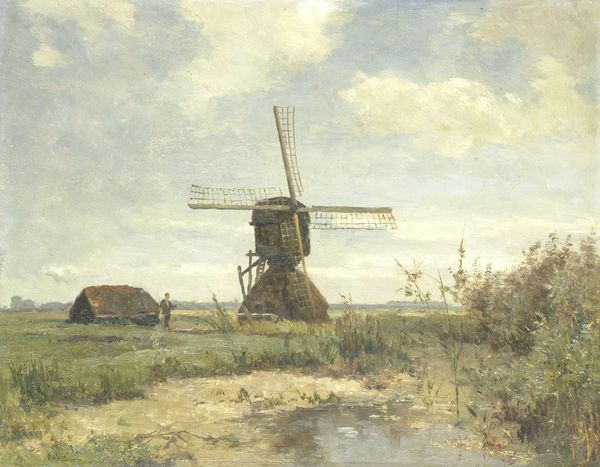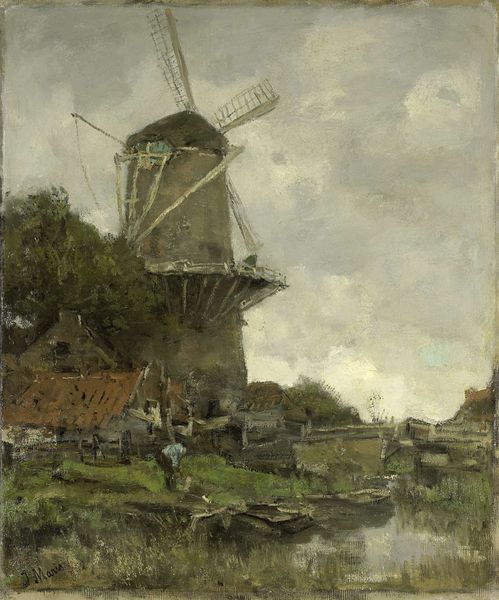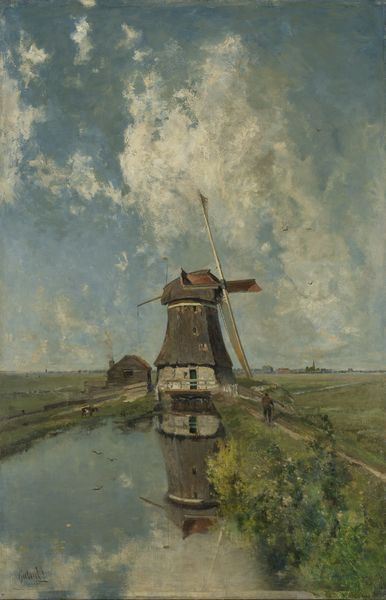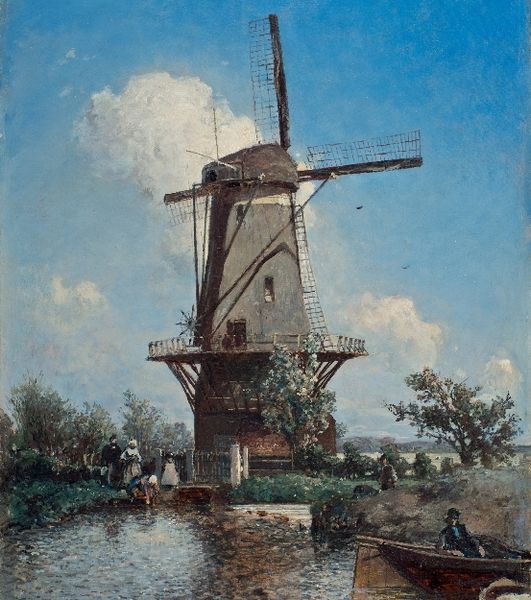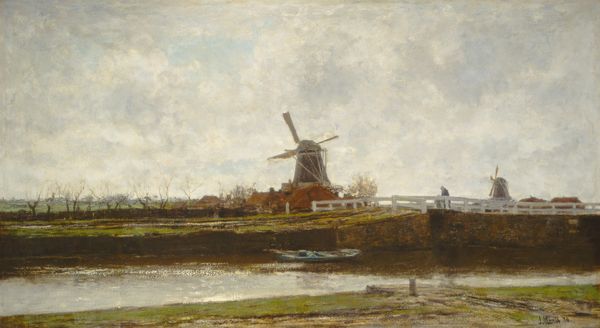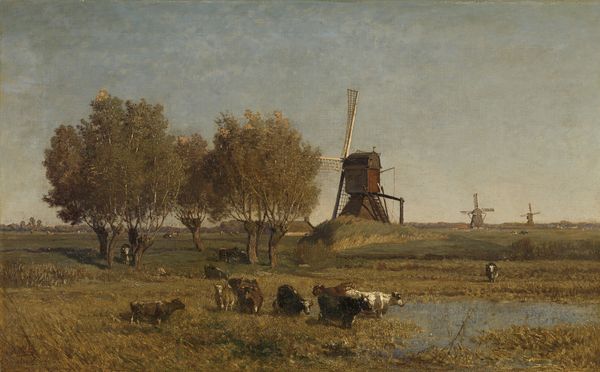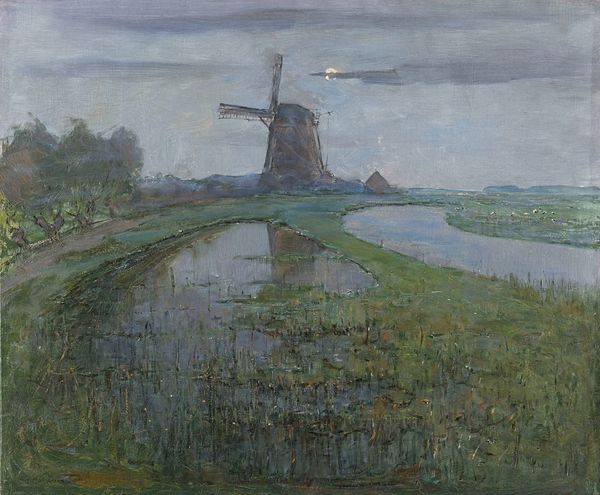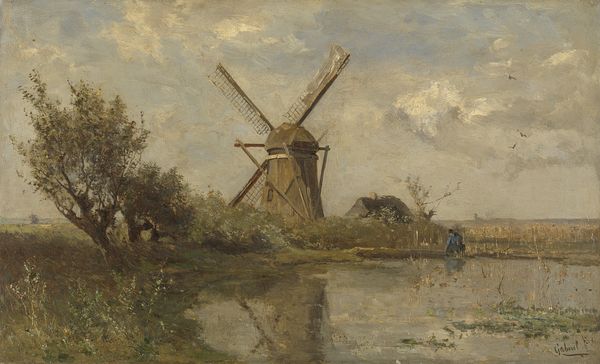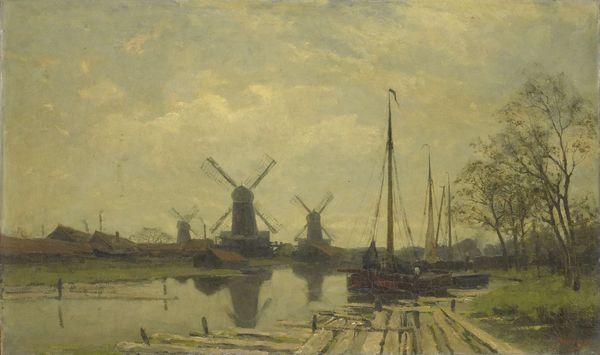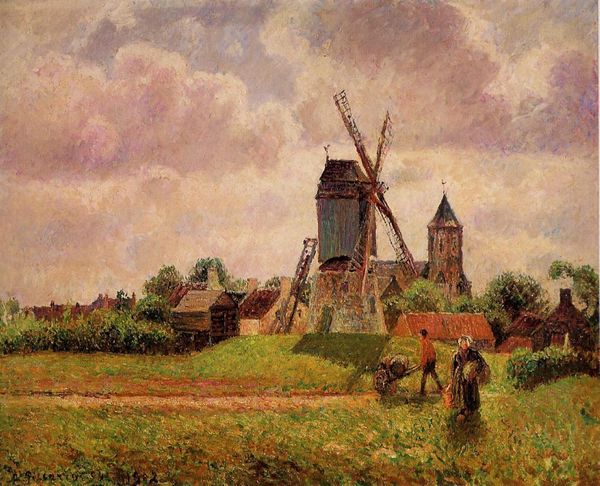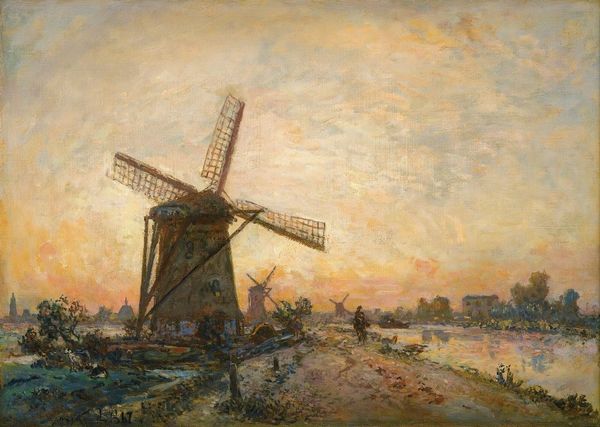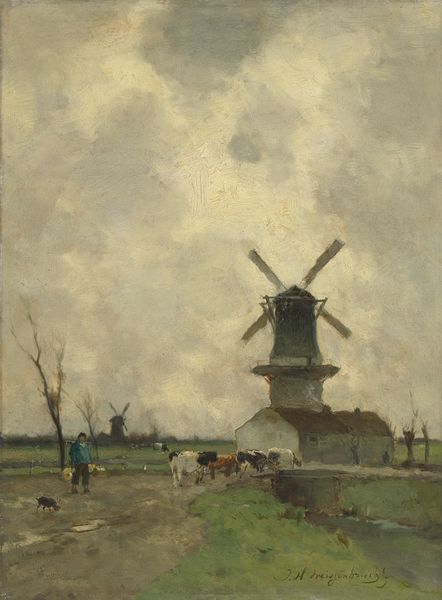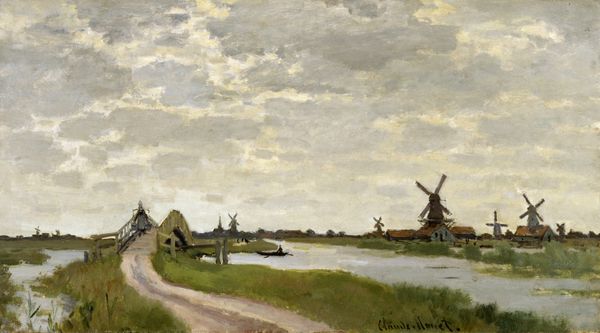
Dimensions: height 45 cm, width 68 cm, depth 9.5 cm
Copyright: Rijks Museum: Open Domain
Editor: This is "The Gein River, near Abcoude," an oil painting by Willem Roelofs, painted sometime between 1870 and 1897. It depicts a serene waterscape in the Dutch countryside. I'm really drawn to the light, but I'm wondering about the depiction of rural life. What can you tell me about it? Curator: Roelofs, working in a period of rapid industrialization, offers a look at a disappearing world. These Dutch landscapes became symbols of national identity. Consider how the windmill isn't just a practical structure; it represents Dutch ingenuity and the battle against the sea, essential to the narrative of the nation’s history. What do you notice about the people in the boat? Editor: They seem so small and...contained? Almost secondary to the landscape itself. Is that intentional? Curator: Absolutely. This connects to larger cultural anxieties about the role of the individual within a changing society. Artists started using realism and romanticism simultaneously to make statements about social progress and human isolation, especially about the disappearance of this rural working class with technological advances. The museum, then as now, plays a role in preserving such "snapshots." Does seeing the painting through this lens change your perspective? Editor: Definitely. I hadn't thought about the social commentary, seeing this as a beautiful landscape. I'm much more aware of the politics behind the imagery. Curator: And understanding that socio-political context gives a richer appreciation for the artistry, right? This is what makes engaging with the history and visual culture of art so fascinating! Editor: I agree. I now see this serene scene carries a weight of cultural and political implications I hadn't previously considered. Thank you.
Comments
No comments
Be the first to comment and join the conversation on the ultimate creative platform.
